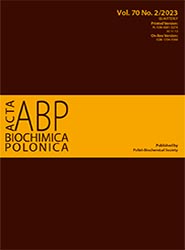PELP1 and SRC kinase as important molecules in the estrogen-mediated pathway in human testis and epididymis
Abstract
Background: Estrogens have pleiotropic mechanisms of action, and their cellular transduction pathways can modulate various proteins with differential tissue expression. Proline-, glutamic acid-, and leucine-rich protein 1 (PELP1) is one such protein whose role seems important, although little is known about this protein. However, very little is known about the expression of modulators involved in the estrogen-mediated pathways in the tissues of the male reproductive tract. Methods: In this study, we obtained autopsy specimens of testis and epididymis from 13 men of Caucasian descent. Expression levels were analyzed for both estrogen receptors (ESR1 and ESR2) and their co-regulators, including PELP1 and kinase c-Src (SRC). Results: Protein expression was confirmed with western blot and immunocytochemistry techniques. The expression of both SRC and PELP1 was significantly higher in the testis compared to the epididymis (p=0.040 and p=0.002, respectively). Furthermore, a significant, positive correlation was observed between SRC and PELP1, regardless of tissue type p<0.0001, R=0.78). In the testis, PELP1 expression positively correlated with ESR1 expression
(p=0.367, R=0.6).
Conclusions: Our study suggests a possible relationship between PELP1, SRC, and ESR1 in the human testis and epididymis. This study makes a valuable contribution to the field of estrogen-mediated pathways in the male reproductive tract and describes trends of analyzed genes’ expression and presence. We think our results may open some new research directions of the estrogen signaling in the male reproductive system.
Acta Biochimica Polonica is an OpenAccess quarterly and publishes four issues a year. All contents are distributed under the Creative Commons Attribution-ShareAlike 4.0 International (CC BY 4.0) license. Everybody may use the content following terms: Attribution — You must give appropriate credit, provide a link to the license, and indicate if changes were made. You may do so in any reasonable manner, but not in any way that suggests the licensor endorses you or your use.
Copyright for all published papers © stays with the authors.
Copyright for the journal: © Polish Biochemical Society.


